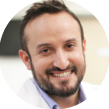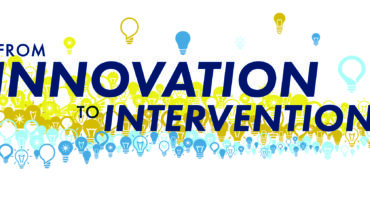
Every day, we ophthalmologists use advanced technologies that were taken from mere ideas to devices that improve patient care. Given the depth of innovation in our field, it’s easy to feel that just about any technology can be developed. There is more to it, however, including a healthy dose of determination.
My experiences with entrepreneurship have taught me how to face the initial dilemmas commonly encountered on the road to innovation. I have named the crucial first steps of innovative discovery the I5S or innovator five-step test. Completing these steps can help you transform an idea into a reality.
THE I5S
Step No. 1: The good idea. How many times have you had an idea that you thought could work? Was the thought you had immediately afterward, “I should be careful not to share my idea with anyone before I protect it.”? The second thought is, in part, what prevents most of your ideas from progressing to the second step of realization.
I once shared an idea with a former R&D director of Microsoft in Israel. Not only did he provide wise advice on how to move forward, but he also supplied me with the names of several individuals who he thought could assist me on the project. I asked him, “Shouldn’t one be afraid to share their ideas with someone like you with hundreds of talented software engineers at his disposal?” He replied, “None of my full-time engineers are sitting around the office with no work to be done. They are all busy focusing on the work they are paid to do.”
His answer made me see clearer something I already knew: It is unlikely for someone to steal your idea and undertake the long, arduous process without you.
It is hard to protect but easy to improve on an idea during the incubation stage. I believe that the benefits of sharing a good idea outweigh the risks. Your idea will be challenged by those with whom you share it, and you will gain valuable insights and perspectives you would otherwise lack. That said, be cautious when sharing confidential information about the technology, especially as it matures and if you have an execution plan in place.
One more thing: Don’t be discouraged if individuals challenge your idea or tell you it will never work. Like Albert Einstein said, “If at first the idea is not absurd, then there is no hope for it.”
Step No. 2: Find your yes partner. A yes partner is a strong problem-solver who believes in your idea, embraces it, improves on it, and helps shape it into a promising working technology. This is someone you feel will answer “yes” to overcoming challenges that may prevent your idea from becoming a working prototype. Yes partners can be people you know personally, but often the partnership results when one of your contacts connects you to the appropriate person.
My yes partner is an electro-optical engineer. One time, he interrupted me while I was dreaming out loud (“Imagine if it would work as we planned …”) to tell me that, in the engineering world, there is no if; it’s only a matter of time and money. This discussion helped me understand that it is better if I focus on attracting investors while the yes partner focuses on converting the idea into a working technology. (Editor’s note: For more on finding investors, see “Attracting Investors and Advisors.”)
Step No. 3: Crack the code. The most challenging piece of the innovation puzzle and what stands between you and attaining your proof of concept (POC) is funding. Most potential investors want to see initial outcomes before committing to finance a project whereas engineers will be asking for funds to get your POC ready. In my experience, the fastest way to unlock the situation, so to speak, is to obtain a hybrid loan agreement with the engineer. In this scenario, the engineer covers the cost of the POC retrospectively with the money that will be raised. The second funding path is slower and similar to real estate funding. In this scenario, several research institutions, scientific societies, and universities provide small grants to fund the initial scientific research. Once there is enough scientific evidence, another source of potential funding to take your prototype to the next level is venture capital investment.
Step No. 4: The poker face. Having an inexperienced surgeon present their idea to investors is like having the best hand at a poker table but not knowing how to play it. In medical school and training, we learned how to educate fellow physicians and patients but not how to excite and sell to potential business partners and investors. The latter skills are required to bring an innovation to market.
We physicians know better than anyone what needs are yet to be met. (Editors’ note: For more on physicians’ role in innovation, see “Bringing Meaningful Innovation to Market.”) The new generation of physicians would benefit from learning how to communicate the value of their ideas early in their careers. If you wish to be involved in health care or biotechnology innovation, I recommend enrolling in an MBA program or equivalent.
Step No. 5: Get ready for the first real step. Don’t get distracted by obtaining the first crucial funds for your project (although it is truly exciting). The first real step is preparing yourself for the long but worthwhile journey of developing an innovation and bringing it to market. Now is the time to dedicate yourself to the project.
CONCLUSION
Einstein said, “Imagination is more important than knowledge.” We physicians may be lucky enough to have both. Our clinical activity offers inspiration. It is time for those of us who want to reshape health care to jump into innovation.


